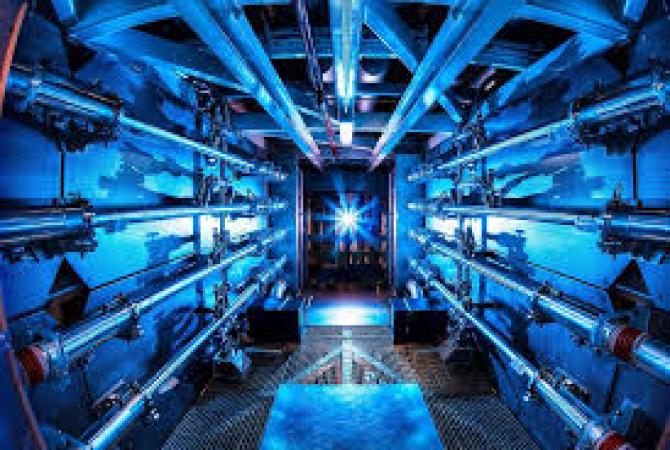Introduction
For decades, nuclear fusion has been the "holy grail" of clean energy—offering the dream of virtually unlimited, carbon-free power without the long-lived radioactive waste of traditional nuclear fission. In 2025, that dream edged closer to reality. In a landmark announcement, scientists at the National Ignition Facility (NIF) in California revealed they had achieved a net energy gain from a controlled fusion reaction—a feat that no laboratory had ever accomplished before.
This breakthrough represents one of the most significant milestones in energy science. It proves that fusion, the same process that powers the sun and stars, can be harnessed on Earth in a way that produces more energy than it consumes. The implications for energy, climate change, and geopolitics are enormous.
What Is Nuclear Fusion?
Nuclear fusion occurs when two light atomic nuclei—usually isotopes of hydrogen—fuse to form a heavier nucleus, releasing an enormous amount of energy in the process. This is how the sun generates its heat and light. Unlike fission, which splits heavy atoms and creates radioactive byproducts, fusion’s only major byproduct is helium—an inert gas.
The main challenges of fusion lie in achieving the right conditions: extremely high temperatures (millions of degrees), immense pressure, and precise confinement to make the nuclei collide with enough force to overcome their natural repulsion. So far, this has required more energy input than output—until now.
The 2025 Breakthrough at NIF
The National Ignition Facility uses inertial confinement fusion, where 192 high-powered lasers converge on a tiny fuel pellet of deuterium and tritium (two hydrogen isotopes). The energy from the lasers compresses and heats the pellet, initiating a fusion reaction.
In February 2025, a single shot produced over 3.2 megajoules of energy output from just 2.1 megajoules of input energy—marking the first time a net gain was observed in a controlled fusion setting.
Though the gain is modest in practical terms, it represents proof of principle—a crucial validation of decades of theory and engineering. For the first time, humans have created a fusion reaction that puts out more energy than it requires to start.
Why This Matters
1. Clean and Abundant Energy
Fusion fuel is abundant—deuterium can be extracted from seawater, and tritium can be bred from lithium. A fusion power plant could provide clean energy without emitting carbon dioxide or producing long-lived radioactive waste.
2. Energy Security
Fusion energy doesn't rely on scarce fossil fuels or geopolitically sensitive supply chains. It offers a potential path to energy independence for nations around the world.
3. Climate Change Solution
If scaled, fusion could become a cornerstone of a global decarbonization strategy, complementing renewables and replacing coal or gas plants without the intermittency problems of solar and wind.
The Road Ahead: Scaling Fusion
Despite this incredible success, significant hurdles remain before fusion powers our cities:
Sustained Reactions: The NIF’s experiment lasted only nanoseconds. Future systems must maintain reactions for extended periods—minutes or hours—to be useful for power generation.
Repetition and Efficiency: Fusion power plants must generate net energy reliably and continuously, not just in one-off experiments.
Engineering Challenges: Containing and extracting energy from plasma at extreme temperatures requires revolutionary materials and reactor designs.
To address these, private startups and government labs are investing in new reactor types, such as tokamaks and stellarators, which use magnetic confinement. In the UK, Tokamak Energy and the JET (Joint European Torus) project have also made headlines, with JET producing record fusion energy outputs using magnetic fields.
Fusion Around the World
Several countries are racing to lead in fusion energy:
China has rapidly advanced its own tokamak experiments and aims to build a prototype fusion reactor by 2030.
The European Union continues work on ITER, the world’s largest fusion project in France, which aims to demonstrate scalable fusion power by the 2030s.
South Korea and Japan are investing heavily in both magnetic and laser fusion technologies.
Private companies like Commonwealth Fusion Systems, TAE Technologies, and Helion Energy are also pushing the boundaries with alternative approaches and compact fusion reactors. These startups, backed by billions in funding, aim to build pilot plants within the next five years.
Public and Political Impact
The news has generated global attention, reigniting debates about energy policy and funding priorities. Some climate activists see it as a vital long-term solution, while others caution that reliance on a future fusion promise could delay urgent action on deploying existing clean energy technologies.
Nevertheless, politicians and policymakers are taking notice. Governments have begun increasing funding for fusion development, while international collaborations are accelerating.
In the U.S., the Department of Energy announced a multi-year fusion roadmap, committing to funding fusion demonstration plants by the 2030s. Similar commitments are emerging in the UK, South Korea, and the EU.
Conclusion
The successful net energy gain in fusion is a beacon of scientific achievement and human ingenuity. It confirms that fusion energy is not just a fantasy—it is a feasible solution within reach, though not yet ready for the grid. The 2025 breakthrough marks the dawn of a new era in energy, offering hope for a cleaner, more sustainable future.
With sustained investment, international collaboration, and continued innovation, fusion could redefine how humanity powers its world—providing safe, clean, and nearly limitless energy for generations to come.

